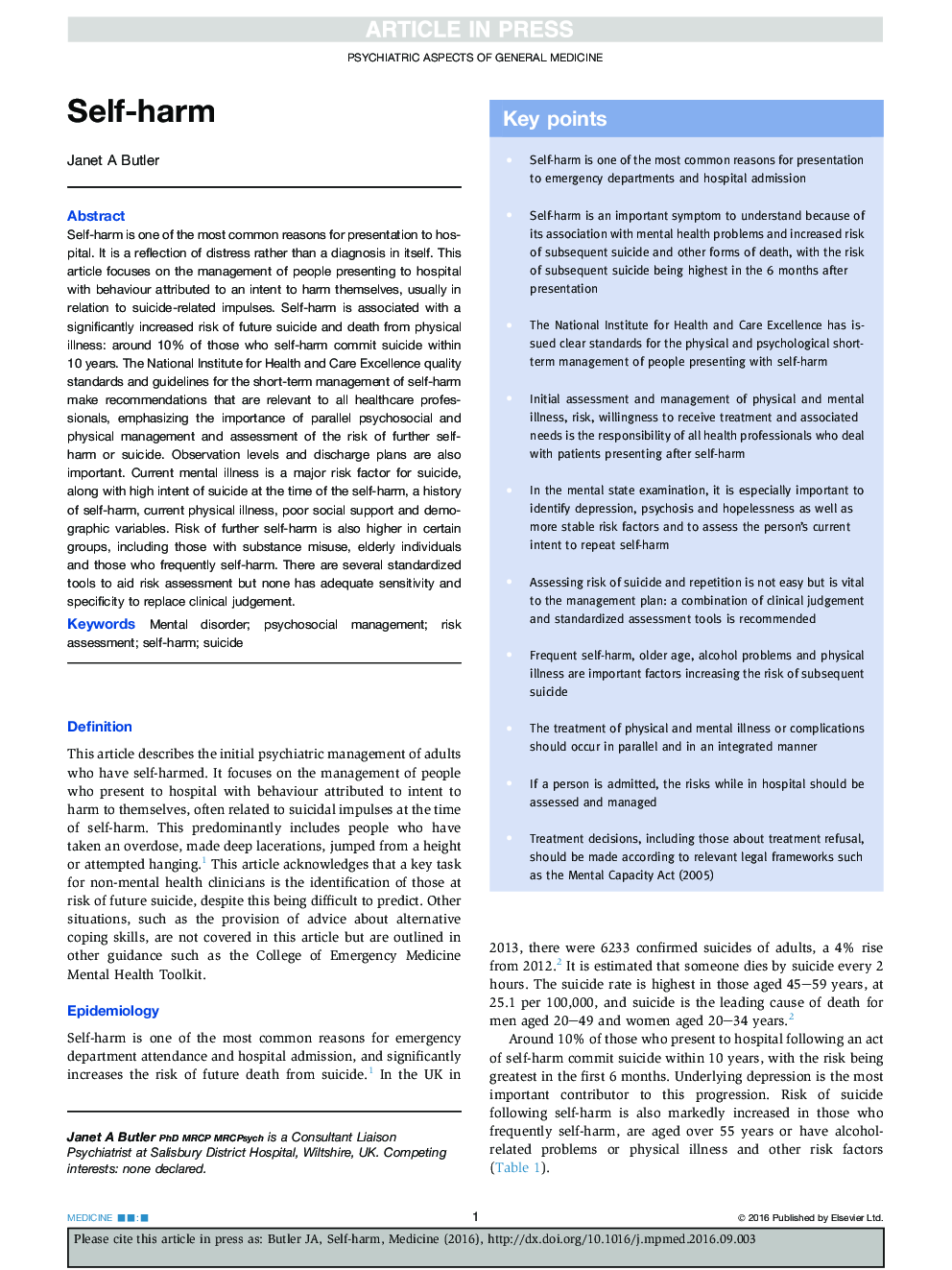| Article ID | Journal | Published Year | Pages | File Type |
|---|---|---|---|---|
| 5681235 | Medicine | 2016 | 5 Pages |
Abstract
Self-harm is one of the most common reasons for presentation to hospital. It is a reflection of distress rather than a diagnosis in itself. This article focuses on the management of people presenting to hospital with behaviour attributed to an intent to harm themselves, usually in relation to suicide-related impulses. Self-harm is associated with a significantly increased risk of future suicide and death from physical illness: around 10% of those who self-harm commit suicide within 10 years. The National Institute for Health and Care Excellence quality standards and guidelines for the short-term management of self-harm make recommendations that are relevant to all healthcare professionals, emphasizing the importance of parallel psychosocial and physical management and assessment of the risk of further self-harm or suicide. Observation levels and discharge plans are also important. Current mental illness is a major risk factor for suicide, along with high intent of suicide at the time of the self-harm, a history of self-harm, current physical illness, poor social support and demographic variables. Risk of further self-harm is also higher in certain groups, including those with substance misuse, elderly individuals and those who frequently self-harm. There are several standardized tools to aid risk assessment but none has adequate sensitivity and specificity to replace clinical judgement.
Related Topics
Health Sciences
Medicine and Dentistry
Medicine and Dentistry (General)
Authors
Janet A. Butler,
